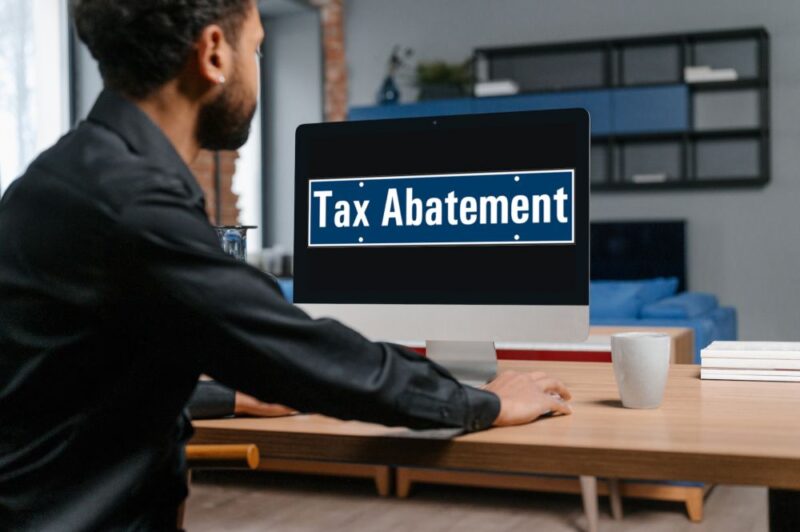Tax abatement, in its simplest form, refers to a reduction or exemption in the level of taxation faced by an individual or company. Think of it as a tax break or discount.
For instance, if you’ve overpaid your taxes or believe your bill is unjustly high, you can request an abatement from the authorities. Now, you might be wondering, why does this matter to you?
Well, abatements can play a significant role in your financial decisions, especially when considering property investments or business ventures. They can influence where you buy a home, where you set up a business, and even how you plan your long-term financial strategies.
The Fundamentals

At its core, tax abatement is a strategy used by governments to stimulate specific activities, like investments in capital equipment or real estate. For instance, some cities might offer property tax abatement programs to attract buyers to areas undergoing revitalization. This means that for a set period, you could pay reduced property taxes, making it financially appealing to invest in those areas.
There are a few key things to understand about tax abatements:
- Purpose: The primary goal is to encourage development or economic activity within a specific area or sector.
- Duration: Most abatements aren’t forever. They usually expire after a set number of years, after which taxes return to their standard rates.
- Eligibility: Not everyone can get an abatement. There are often specific criteria to meet, whether it’s related to income levels, property type, or planned improvements. How it Works
The Role of Local Governments

Local governments play a pivotal role in tax abatements. They determine the areas or sectors where abatements are offered, set the criteria for eligibility, and oversee the application and approval processes. Their goal is often to boost local economies, prevent industries with high employment from leaving, or attract new businesses and residents to the area.
Types of Taxes Affected
While property taxes are the most commonly discussed in relation to abatements, other forms of taxation can also be affected. For instance, a local government might offer a temporary reduction in business taxes to attract or retain certain companies.
Eligibility Criteria
Eligibility can vary widely based on the goals of the local government. Some common criteria include:
- Location: Abatements might be restricted to specific areas or zones.
- Income Levels: Some programs might be limited to low-to-middle-income property owners.
- Property Type: For instance, owners who restore historic properties in designated areas might be eligible for abatements.
Dispelling Common Misconceptions
While beneficial, are often surrounded by misconceptions. One common myth is that they reduce overall tax revenue. In reality, while they may limit the additional revenue collected during the term of the abatement, they don’t necessarily reduce the existing tax revenue. Moreover, by potentially incentivizing new development, they can counter any loss in tax revenues, aligning with the broader revitalization goals of a community.
Another misconception is the application of the “but-for” test. This test ensures that an eligible property would not have seen development or other qualifying activity without the tax break.
Critics argue that this test is sometimes applied too loosely, resulting in undeserved tax breaks. However, when applied correctly, it ensures that the benefit is given only where necessary to stimulate needed development.
TAX ABATEMENT IS NOT a permanent tax elimination. It’s a temporary reduction or exemption. Also, it’s not a one-size-fits-all solution. The structure and benefits can vary widely based on the community’s goals and needs.
Weighing the Pros and Cons

| Pros | Cons |
| Stimulates economic activity | May limit additional tax revenue during the abatement term |
| Attracts new businesses and residents | Potential misuse or misapplication of the “but-for” test |
| Can counter the loss in tax revenues | Not a permanent solution; expires after a set period |
While tax abatements offer clear advantages they come with trade-offs. Communities must weigh these pros and cons carefully, considering their long-term goals and the specific needs of their residents.
The Application Process
The application process can vary based on the locality and the specific program. Generally, it involves submitting an application to the local tax authority or the agency overseeing the abatement program. This application will typically require details about the property, the planned development or activity, and how it aligns with the goals of the tax abatement program.
Documentation requirements can vary, but often include:
- Proof of property ownership
- Detailed plans for development or improvement
- Financial statements or projections
- Evidence supporting the need for tax abatement (e.g., alignment with community revitalization goals)
It’s crucial to consult with local authorities or a tax professional to understand the specific requirements and ensure a successful application.
Assessing Economic Impact

Tax abatements and exemptions can have a profound impact on local economies. By offering these incentives, local governments aim to stimulate economic activities, such as the construction or rehabilitation of buildings, especially those that include affordable housing units.
The direct reduction in taxes can serve as a significant incentive for developers and property owners, leading to increased construction activity, job creation, and overall economic growth.
Moreover, these incentives can also indirectly assist lower-income households. For instance, by encouraging rental property owners to upgrade the condition of lower-cost units, the overall quality of housing available to these households improves. This can lead to better living conditions and, in turn, improved health and well-being for residents.
Implications for Job Creation and Retention
Tax incentives can lead to increased construction and rehabilitation activities, which directly result in job creation in the construction sector. Additionally, by attracting new businesses and retaining existing ones, these incentives can lead to job creation in various sectors of the economy.
However, it’s essential to note that while these incentives can lead to short-term economic boosts, the long-term implications need careful consideration. For instance, while tax abatements might lead to immediate job creation, the potential reduction in tax revenue could impact the funding available for other essential services, affecting job retention in other sectors.
Ensuring Transparency and Accountability
Transparency and accountability are crucial when implementing tax abatement or exemption programs. Local governments must establish clear guidelines for eligibility, application processes, and monitoring. Regular reporting can ensure that the incentives are achieving their intended goals and that there’s no misuse or misapplication.
For instance, some cities require property owners or managers to submit documentation verifying that residents of the affordable units meet income and other eligibility requirements. This can be done either at the time of occupancy for new constructions or throughout the duration of the abatement or exemption.
Safeguarding Public Interest
While tax incentives aim to serve the public interest by stimulating economic activity and improving housing conditions, it’s essential to ensure that they don’t inadvertently harm the community. For example, while tax abatements might attract new developments, they could also lead to gentrification, pushing out long-term residents.
To safeguard the public interest, local governments should engage in open, equitable, and inclusive decision-making processes. This involves consulting with community members, assessing the potential impacts of proposed incentives, and making adjustments as necessary to ensure the broader community benefits.
Exploring Alternatives

Split-rate taxation is an alternative approach where structures and land are taxed at different rates. This system aims to stimulate development and improvements to existing structures while penalizing speculative property owners who leave their lots unimproved.
Another alternative is inclusionary zoning, which requires developers to include a certain percentage of affordable housing units in new developments. This ensures that as cities grow and develop, they remain accessible to residents of all income levels.
Making Informed Choices
Choosing the right economic development incentive depends on a city’s specific goals and needs. While tax abatements might be suitable for one community, inclusionary zoning or split-rate taxation might be more appropriate for another.
It’s essential for local governments to assess their unique challenges and opportunities, consult with community members, and make informed choices that serve the broader public interest.
How do tax abatements impact small businesses?
Tax abatements can significantly benefit small businesses by reducing their tax liabilities, thereby freeing up capital that can be reinvested into the business. This can lead to job creation, expansion of services, or even research and development. Local governments often offer these incentives to attract and retain businesses, fostering local economic growth.
Are there specific industries that commonly benefit from tax abatements?
Yes, while tax abatements can be offered to various sectors, certain industries are often targeted due to their potential for job creation, economic impact, or alignment with local development goals.
For instance, renewable energy sectors, manufacturing, tech startups, and research and development enterprises might be offered tax abatements to encourage growth and innovation within a region.
FAQ
Will my apartment remain rent-stabilized after my landlord no longer benefits from the tax break?
If a new building is constructed or an old building is fully rehabilitated, the owner can receive an abatement/exemption from real estate taxes for a prescribed period from the City. In return, the building is placed under rent stabilization.
After the benefits expire, rent stabilization coverage may expire if the landlord follows the correct procedure. The specifics can vary based on the type of tax abatement, such as J-51 or 421-a, and whether proper notices were provided in the lease.
Can I challenge the increase when the tax abatement on my building expires?
While there isn’t a direct mechanism to stop the expiration of a tax benefit, under some circumstances, tenants will remain under stabilization after the benefits expire. It’s essential to confirm the expiration of tax benefits and review the requirements.
If you find any discrepancies, you could retain an attorney or contact NYS Homes and Community Renewal (HCR), the state agency that administers the rent laws.
Conclusion
Tax abatements and exemptions are powerful tools that local governments can leverage to stimulate economic growth, attract and retain businesses, and improve housing conditions. We’ve explored the fundamentals of tax abatements, their mechanics, and the role of local governments in their implementation. We’ve also delved into the pros and cons, the application process, and their broader economic impact.
Knowledge is power. By understanding tax abatements and exemptions, you’re better equipped to make informed decisions, whether you’re a property owner, a developer, or a resident.
Together, with the right knowledge and collaboration, we can ensure that tax abatements and exemptions serve the broader public interest, contributing to the growth and well-being of our communities.
